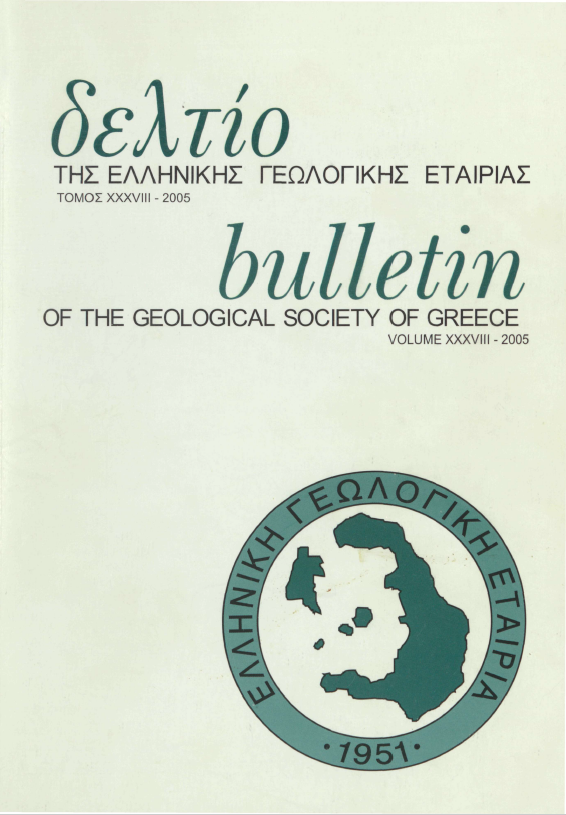GEOMORPHOLOGICAL EVOLUTION OF THE COASTAL AREA OF ISTRON (N.E CRETE), FROM THE MIDDLE HOLOCENE UNTIL TODAY

Abstract
The Istron area is located in northeastern Crete, Gulf of Mirabello, on an alluvial fan of Holocene age. The archaeological importance of this area is pointed out not only by its archaeological remains, but also by its significant location. Many important minoan sites, like Gournia, Kavousi, Pseira, have been discovered near Istro,. There are indications of human installations from the Neolithic to the Roman period, proving the continuous human activity in this area. The significant geological location, as it represents an area with intense tectonic activity, the geomorphological regime of the area and the climatic changes , influenced human installations as well as the evolution of the civilization . The study of sea-land interactions during the last seven millennia in relation to the eustatic sea level oscillations and the regional neotectonic regime, as well as the géomorphologie observations and analyses on deposited sediments, aims to reveal the paleogeographic evolution of the landscape and its impact on prehistoric, classical and Roman establishments. Therefore, a geomorphological mapping of the coastal area along with the drilling of five boreholes and the excavation of six trenches, have been accomplished. Moreover, pollen and microfaunal (benthic foraminifera and ostracodes) analyses have been performed. Six samples were dated using AMS and Conventional radiocarbon techniques providing temporal control of the sediments. Sea level rise along with sea-land interactions to the landscape evolution and the transgression of sea in 5000BP have been verified. Additionally, several implications for the use of land and human impact civilization have been concluded.
Article Details
- How to Cite
-
ΠΑΥΛΟΠΟΥΛΟΣ Κ., ΘΕΟΔΩΡΑΚΟΠΟΥΛΟΥ Κ., HAYDEN, B., ΤΣΟΥΡΟΥ Τ., ΤΡΙΑΝΤΑΦΥΛΛΟΥ Μ., ΚΟΥΛΗ Κ., ΜΠΑΣΙΑΚΟΣ Ι., & ΒΑΝΔΑΡΑΚΗΣ Δ. (2005). GEOMORPHOLOGICAL EVOLUTION OF THE COASTAL AREA OF ISTRON (N.E CRETE), FROM THE MIDDLE HOLOCENE UNTIL TODAY. Bulletin of the Geological Society of Greece, 38, 54–68. https://doi.org/10.12681/bgsg.18425
- Section
- Geomorphology

This work is licensed under a Creative Commons Attribution-NonCommercial 4.0 International License.
Authors who publish with this journal agree to the following terms:
Authors retain copyright and grant the journal right of first publication with the work simultaneously licensed under a Creative Commons Attribution Non-Commercial License that allows others to share the work with an acknowledgement of the work's authorship and initial publication in this journal.
Authors are able to enter into separate, additional contractual arrangements for the non-exclusive distribution of the journal's published version of the work (e.g. post it to an institutional repository or publish it in a book), with an acknowledgement of its initial publication in this journal. Authors are permitted and encouraged to post their work online (preferably in institutional repositories or on their website) prior to and during the submission process, as it can lead to productive exchanges, as well as earlier and greater citation of published work.




